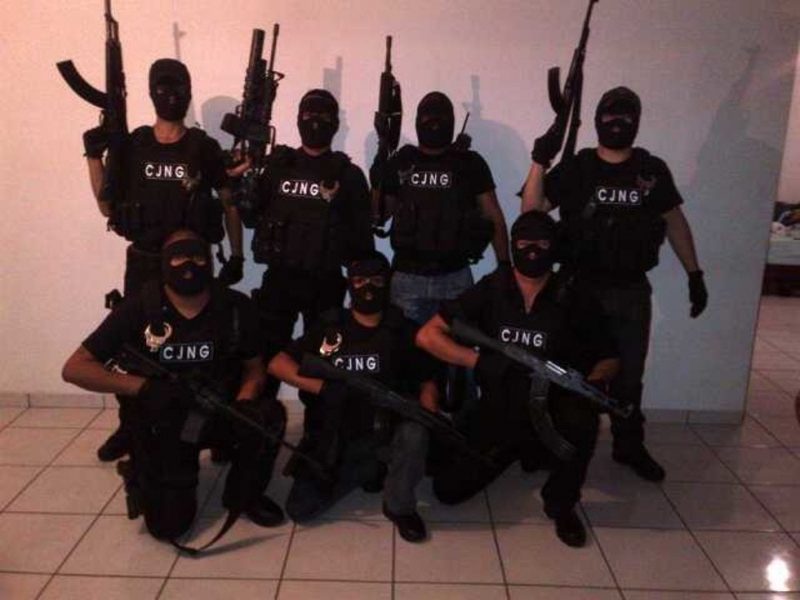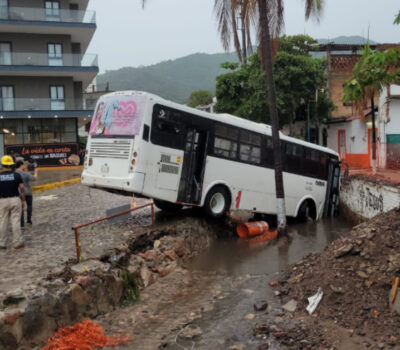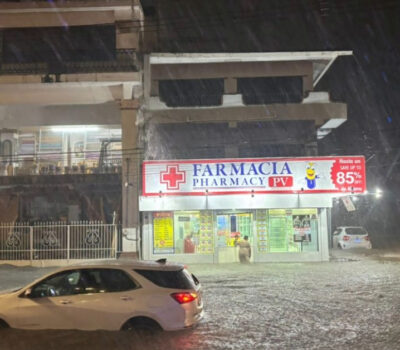On the first day of training to become a hitman for the Jalisco Cartel New Generation, Francisco learned that the only way to escape from the camp was to leave “in a body bag.” In three months he’d learn much more: how to handle short and long weapons, ambush enemies, respect the rules, not be a gossiper and how to kill.
“You see how they kill people, taste human flesh, you live in terror,” he says.
Francisco — the name he has given to protect his identity — told Telemundo that he spent three months in a Jalisco Cartel New Generation (Cartel Jalisco Nueva Generación – CJNG) training camp. His testimony, the only one to date, could not be corroborated by other witnesses, but his story coincides with the tactics described by former Mexican and US security agents. He says he had to endure physical and psychological resistance tests, as well as loyalty tests.
During the interview, Francisco asks to check the video camera to make sure that he is really being visited by a team of reporters. He checks his cell phone every 15 minutes. His hands and feet shake every time he recalls the crudest moments of his past. He only allows us to say that he is 34 years old, has a son, and that in a previous life he worked in a cookie factory.
According to his story, the terror began by chance in April 2018. At a bar in a southern Mexican state he does not identify, he says a stranger approached him and told him that he had run out of money and needed a ride. Francisco took him to his car. When he arrived at the destination, the stranger took money from an ATM machine and asked for his cell phone number.
“I’m going to call you. I liked you,” the man told him.
Francisco still did not know who this stranger was. He would later find out that he was one of the children of CJNG leader Nemesio Oseguera Cervantes, alias “El Mencho.” As promised, the man contacted Francisco soon thereafter. He wanted to offer him a job as a private security guard in Villahermosa, the capital of Tabasco state. It would pay 3,500 pesos per week (around $180), in addition to covering a daily allowance and expenses. Even the four weeks of training would be paid for. Francisco accepted. They asked for his birth certificate and a bank account number to deposit his earnings.
The next day he was summoned to a bus station. “I saw a lot of people coming. There were 19 men in their 20s and 30s. There were masons, carpenters, mechanics, security guards, graduates and accountants.”
They were transferred to Mexico City where they were placed in a hotel with a spa. At 6 p.m., the person who led the expedition said “let’s go,” and they left for the Pacific coast city of Puerto Vallarta in Jalisco state. On two occasions, those in charge asked the men if they wanted to continue. “For those who get on the bus, there is no turning back.” The youngest ones said, “I’ll go. I want to work.” The others followed. When they arrived, they were put into a house where another man approached them.
“Well, you are going to be training in the mountains of Guadalajara to be security guards, right?” one of the men in charge said.
“Yes,” they all agreed.
“Well, you’re not going to be a security guard, you’re going to work for the CJNG.”
“But nobody ever told me that,” one of the men protested.
“If you want to go, fine, get out of here. The only way out of here is in a body bag. Whoever wants to go with him better speak up now. We’re not here to play.”
“Then I understood, and we all understood, that we were in big trouble. You don’t know what’s going to happen next, but you have to stay quiet and very serious because they could take any movement the wrong way,” Francisco recalls.
For years, videos of dismembered bodies, shootings, decapitated heads and all types of violence attributed to the CJNG ran through his mind. “I thought a lot about my son,” Francisco says. He ultimately decided to stay.
The CJNG has grown to become one of the most powerful cartels in Mexico, according to analysts and security forces. The Attorney General’s Office estimates that the cartel maintains a presence in 28 of the country’s 32 states, according to local media reports. The cartel has also established alliances with local criminal groups in the states of Durango, Campeche, Coahuila and Zacatecas.
The CJNG has also expanded abroad, “with a significant presence not only in the United States and Mexico, but also in Europe, Asia and Australia,” according to the US Drug Enforcement Administration (DEA).
The genesis of this criminal organization, according to Sam Houston State University professor Nathan P. Jones, dates back to the July 2010 death of Sinaloa Cartel boss Ignacio Coronel Villarreal, alias “Nacho Coronel.” He specialized in methamphetamine production in the region around Jalisco. When Mexican authorities killed him, his operations fragmented into several groups. One of them was led by El Mencho. He was able to take advantage of Jalisco’s geographical location near Mexico’s Pacific ports. This allowed him to increase the volume of his business thanks to the sale of methamphetamine in markets in Europe and Asia, and the sale of fentanyl in the United States. Control of the ports was key to the CJNG being able to obtain the resources that allowed them to expand territorially, to corrupt Mexican government officials and to train their assassins as an elite force.
Francisco’s training camp was in Talpa de Allende, a municipality of just over 15,000 people in western Jalisco. A group of men armed with assault rifles and portable missile launchers loaded the 19 men into luxury trucks and drove them on dirt roads out to a hidden place in the Sierra de Talpa. The first truck stopped, then someone pulled a gun out the window and shot three times, which automatically opened a gate. They all passed and, again, another three shots were fired to signal the gate to close.
Once inside, the armed men took their cell phones and stripped them. “They had some car batteries. They got us wet and made us grab the terminals. So, if you had a GPS [Global Positioning System device] hidden inside you, it would burn. The shock was so strong that I practically peed,” Francisco explained.
The local boss was a young man about 28 years old, according to Francisco. He chose a nickname to address each of them. Then the training began with instructions on how to handle short and long weapons: handguns, AK-47 rifles and rocket launchers similar to the one the CJNG used to shoot down a Mexican Army helicopter in an attack that killed seven soldiers in May 2015.
The instructors let the men know all of the cartel’s rules imposed by El Mencho. They started with those related to firearms.
“Rule number one: Your finger should always be away from the trigger. Otherwise, in front of a cartel leader or high-ranking commander, you could be considered a threat and they could kill you.”
“Rule number two: Always check the safety.”
“Rule number three: Know how to hand over a weapon. Always pass it with the butt of the gun and not the barrel.”
The instructors imposed strict discipline. One mistake could be fatal. As was the case for one of the 19 recruits who nervously failed to put together a gun.
“In the blink of an eye, he killed him. He told us that he wasn’t useful because in a real confrontation, he would panic and put us all in danger,” Francisco said. Then began what the cartel called “the christening.” They all approached the corpse of their recently murdered companion.
“What is the first rule?” the plaza boss asked.
“If there isn’t a body, there isn’t a crime to pursue,” two of the commanders responded.
“Ok, Shaggy, come here. Cut off his hand. You don’t want to do it? Just tell me you don’t want to,” one commander said.
“You knew that if you said no, they were going to kill you,” Francisco recalls. Trembling, he began to cut off the dead man’s hand. Francisco touched his forearm. “I had to do it, you have no choice. I remember the fear, the blood.”
They were going one by one. The commanders saved the timidest group of recruits for the most difficult task: to decapitate the dead man and crush his head with a stone. When the body was severed, they were forced to eat some parts of it.
“There was one recruit who couldn’t eat it and vomited, but they picked up the piece of flesh from the dirt and forced him to eat it.”
These cannibalistic practices described by Francisco coincide with what a group of cartel hitmen arrested last June revealed. They said they did it to become insensitive. The Attorney General’s Office in Jalisco has discovered at least five camps that the cartel used as clandestine training centers and narco-laboratories. Two more have been dismantled in Veracruz and Tabasco.
For Francisco, this was only the first part of a three-month stay in captivity. What would come next would be the worst part of his training.
This article was originally published by Sin Embargo via Telemundo
On the first day of training to become a hitman for the Jalisco Cartel New Generation, Francisco learned that the only way to escape from . . .












